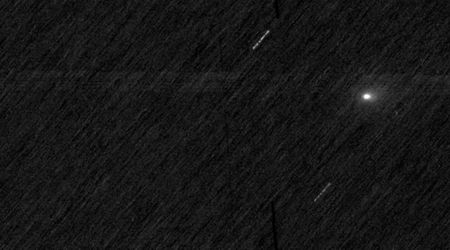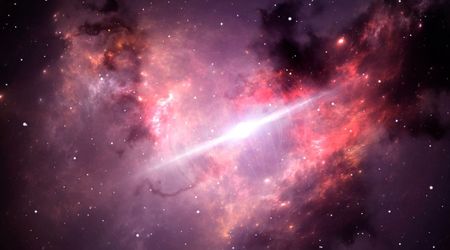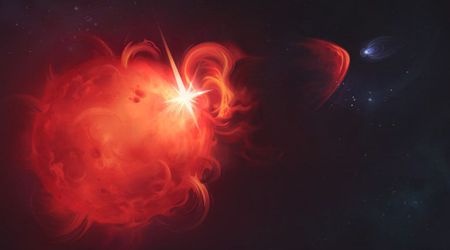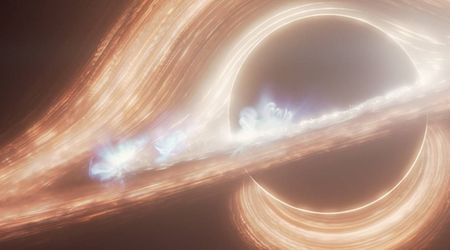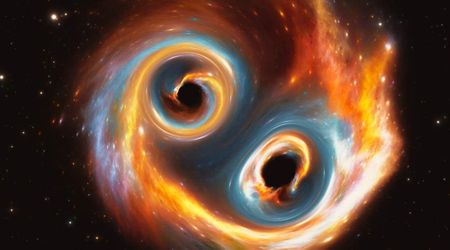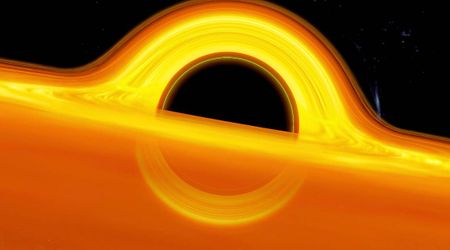Blue Origin's New Shepard carries six passengers to suborbital space blending business and tech goals

Blue Origin launched six individuals into suborbital space aboard its New Shepard vehicle on May 31. The Company's CEO emphasized that these missions serve a dual purpose: they represent a viable business model while also providing a crucial platform for testing and developing technology. The flight, originating from Launch Site One in West Texas, demonstrated the continued reliability of Blue Origin's space tourism efforts, as per SpaceNews.

The New Shepard capsule successfully lifted off at 9:39 a.m. Eastern time, reaching a peak of 105 kilometers before safely returning to Earth approximately 10 minutes later, closely followed by its booster. This mission, designated NS-32, followed Blue Origin's established flight profile, further solidifying its routine operations in commercial spaceflight. The diverse crew of six included—Aymette (Amy) Medina Jorge, a Texas teacher sponsored by Farmacias Similares; Dr. Gretchen Green, a radiologist and entrepreneur; Jaime Alemán, a Panamanian lawyer and former ambassador of the United States; Jesse Williams, a Canadian entrepreneur and adventurer; Mark Rocket, a New Zealand businessman and early investor in Rocket Lab; and Paul Jeris, a real estate developer.
We just completed our 12th human spaceflight and the 32nd flight of the New Shepard program. The astronaut crew included K-12 STEM teacher Aymette Medina Jorge, radiologist turned explorer Dr. Gretchen Green, former Panamanian ambassador to the United States Jaime Alemán,… pic.twitter.com/QbDeTC6owv
— Blue Origin (@blueorigin) May 31, 2025
This particular mission marked the 12th crewed flight for Blue Origin's New Shepard, bringing the total number of individuals who have journeyed to space on the vehicle to 64, with four of them having flown on multiple occasions. Notably, this flight made history by sending the first New Zealander, Mark Rocket, and the first Panamanian, Jaime Alemán, into space. Mission, NS-32 was the fourth New Shepard flight of the year, with three carrying passengers and one dedicated to a payload-only flight that simulated lunar gravity. While the company has not yet disclosed its full flight manifest for the remainder of the year, Blue Origin's commitment to the New Shepard program remains strong. Dave Limp, Blue Origin's chief executive, emphasized this commitment at the "Humans to the Moon" and Mars summit on May 28, confirming that the company will continue to utilize New Shepard even as it advances its New Glenn launch vehicle and develops the Blue Moon lander and other ambitious capabilities.

Limp reiterated his perspective from the Commercial Space conference in February, emphasizing that New Shepard is a valuable asset, both as a standalone service and as a crucial platform for technological advancement across other company initiatives. Limp stated, “First of all, it’s a good business.” He elaborated on the strong desire among people to experience space, noting, “There is an insatiable demand out there for human beings who grew up thinking about space and want to get to space, but it’s still very hard to do right now.” He didn't delve into the specifics of the business's profitability. Blue Origin has historically been private about its pricing and related financial details, as mentioned by the outlet.
Beyond the financial aspects, Limp emphasized New Shepard's critical role as a testing platform. He stated, even if those missions were not a good business opportunity, Blue Origin "would still fly New Shepard because it’s such a good testbed.” He provided specific examples of this, including using New Shepard to flight-test avionics for the larger New Glenn rocket. Furthermore, the suborbital flights are crucial for testing the lidar system, which is an integrated component of the Blue Moon Mark 1 Lunar lander's landing system. This lander is anticipated to have its maiden flight later this year.



